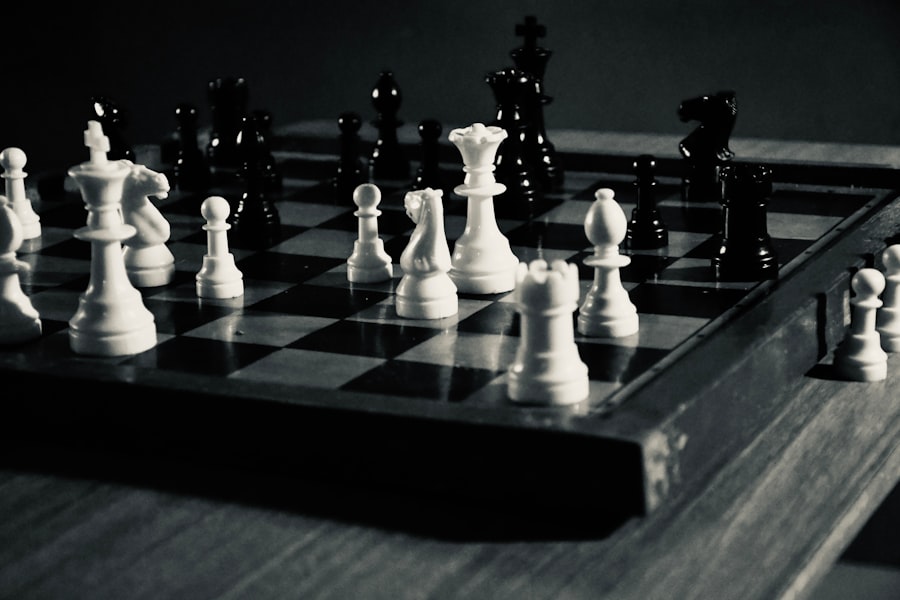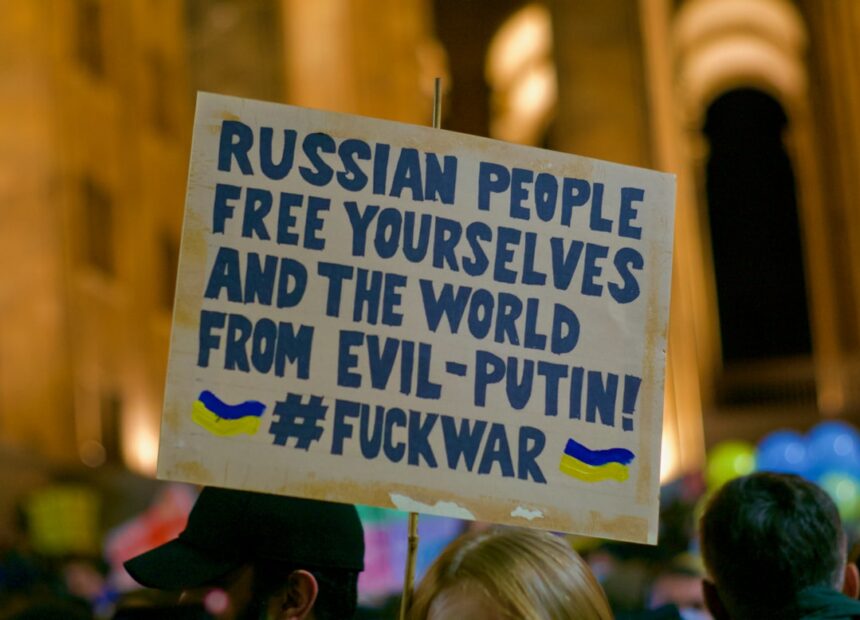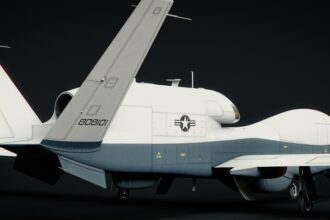The Cold War, a period marked by geopolitical tension between the United States and the Soviet Union, emerged in the aftermath of World War
As the dust settled from the global conflict, two superpowers found themselves at odds, each vying for ideological supremacy. The ideological divide between capitalism and communism set the stage for a fierce competition that extended beyond military might and economic prowess; it also encompassed the realm of intelligence. The origins of this intelligence race can be traced back to the differing worldviews of the two nations, which fueled a paranoia that necessitated extensive surveillance and espionage efforts.
In the early years of the Cold War, both the United States and the Soviet Union recognized the importance of gathering intelligence on one another. The establishment of organizations such as the CIA in 1947 and the KGB in 1954 signified a formalization of intelligence operations. These agencies were tasked with not only collecting information but also conducting covert operations to undermine each other’s influence globally.
The fear of nuclear confrontation and the desire to maintain an edge in military capabilities further intensified this race, leading to a complex web of espionage that would shape international relations for decades.
Key Takeaways
- The Cold War intelligence race was fueled by the ideological and political differences between the United States and the Soviet Union, leading to a fierce competition in gathering intelligence.
- Espionage and spying played a crucial role in the Cold War intelligence race, with both sides employing covert agents and operatives to gather information and gain strategic advantage.
- Technological advancements, such as the development of surveillance satellites and reconnaissance aircraft, revolutionized intelligence gathering during the Cold War and had a significant impact on the balance of power.
- The race for nuclear intelligence was a key focus of the Cold War intelligence operations, with both the US and the Soviet Union seeking to gain insights into each other’s nuclear capabilities and intentions.
- The space race became a critical arena for intelligence gathering during the Cold War, as both superpowers sought to gain strategic advantage through satellite technology and space exploration.
- Cryptography and codebreaking played a vital role in Cold War intelligence operations, with both sides investing heavily in deciphering each other’s encrypted communications and gaining access to classified information.
- Double agents and defectors had a significant influence on Cold War intelligence operations, with individuals like Aldrich Ames and Oleg Penkovsky impacting the balance of power between the US and the Soviet Union.
- The contributions of lesser-known individuals and organizations in the Cold War intelligence race are often overlooked, despite their significant impact on shaping the course of history.
- The legacy of Cold War intelligence operations continues to shape modern intelligence practices and policies, with lessons learned from this era still influencing intelligence gathering and analysis today.
- The relevance of Cold War intelligence in the modern world is evident in ongoing geopolitical tensions and the continued use of espionage, surveillance, and technological advancements in intelligence gathering.
The Role of Espionage and Spying

Espionage became a cornerstone of Cold War strategy, as both superpowers sought to gain insights into each other’s military capabilities, political intentions, and technological advancements. Spies operated in secrecy, often risking their lives to infiltrate enemy ranks or gather critical information. The use of human intelligence (HUMINT) was prevalent, with operatives deployed in various countries to collect data that could inform strategic decisions.
This reliance on human sources underscored the importance of trust and loyalty in a world where betrayal could lead to catastrophic consequences. The role of espionage extended beyond mere information gathering; it also involved psychological warfare. Both sides engaged in disinformation campaigns aimed at destabilizing their opponent’s political landscape.
The use of propaganda and covert operations to influence public opinion became commonplace, as each superpower sought to project strength while undermining the other. This intricate dance of deception and intrigue not only shaped military strategies but also had profound implications for domestic politics, as citizens grappled with the realities of living in a world where trust was scarce.
The Impact of Technological Advancements
| Technological Advancements | Impact |
|---|---|
| Increased Efficiency | Reduction in production time and costs |
| Improved Communication | Enhanced collaboration and global connectivity |
| Automation | Streamlined processes and reduced human error |
| Data Analysis | Better decision-making and insights |
| Enhanced Security | Protection against cyber threats and data breaches |
As the Cold War progressed, technological advancements played a pivotal role in shaping intelligence operations. The development of sophisticated surveillance equipment, including satellites and reconnaissance aircraft, revolutionized the way information was collected. The United States, for instance, invested heavily in aerial reconnaissance programs like U-2 spy planes, which provided invaluable insights into Soviet military installations and capabilities.
These technological innovations allowed for more efficient data collection and analysis, significantly enhancing the intelligence-gathering process. Moreover, advancements in communication technology transformed how intelligence was shared and disseminated. The ability to transmit information quickly and securely became paramount in a race where time was often of the essence.
The introduction of encrypted communication systems allowed for secure exchanges between operatives and their home agencies, reducing the risk of interception by adversaries. However, this technological arms race also led to countermeasures, as both sides sought to develop methods to intercept and decode each other’s communications, further complicating the landscape of Cold War intelligence.
The Race for Nuclear Intelligence
The quest for nuclear intelligence became one of the defining features of the Cold War intelligence race. Both superpowers recognized that understanding each other’s nuclear capabilities was crucial for maintaining a balance of power. The fear of mutually assured destruction loomed large, prompting extensive efforts to gather intelligence on nuclear arsenals and delivery systems.
This race was not merely about numbers; it involved understanding the technological advancements that could tip the scales in favor of one side or the other. The establishment of various treaties aimed at arms control, such as the Nuclear Non-Proliferation Treaty (NPT), highlighted the importance of transparency in nuclear capabilities. However, these agreements were often undermined by espionage efforts aimed at uncovering hidden programs or advancements.
The pursuit of nuclear intelligence led to high-stakes operations, including infiltration attempts into research facilities and monitoring suspected nuclear sites. This relentless quest for information not only shaped military strategies but also influenced diplomatic negotiations, as both sides sought leverage in discussions surrounding disarmament.
The Space Race and Intelligence Gathering

The Space Race emerged as a significant arena for intelligence gathering during the Cold War, with both superpowers striving to demonstrate their technological superiority through space exploration. The launch of Sputnik by the Soviet Union in 1957 marked a turning point, igniting fears in the United States about falling behind in technological advancements. This event prompted an intensified focus on space-based intelligence capabilities, leading to the development of reconnaissance satellites that could monitor military activities on Earth.
These satellites provided a new dimension to intelligence gathering, allowing for real-time surveillance without risking human lives on the ground. The ability to capture high-resolution images from space revolutionized military planning and strategic assessments. However, this technological leap also raised concerns about privacy and sovereignty, as nations grappled with the implications of being constantly monitored from above.
The Space Race thus became not only a competition for scientific achievement but also a battleground for intelligence operations that would shape global dynamics for years to come.
The Role of Cryptography and Codebreaking
Cryptography played a crucial role in safeguarding sensitive information during the Cold War, as both superpowers sought to protect their communications from interception by adversaries. The development of advanced encryption techniques became essential for ensuring that classified information remained secure. However, this also led to an ongoing battle between cryptographers and codebreakers, as each side sought to outsmart the other in a game of wits.
The significance of codebreaking was underscored by several high-profile incidents during the Cold War. For instance, the successful decryption of Soviet communications provided critical insights into their military strategies and intentions. This intelligence often informed U.S.
policy decisions and military actions, highlighting the importance of cryptographic advancements in shaping the course of events. As both sides invested heavily in developing sophisticated encryption methods, they also recognized that breaking these codes could provide a decisive advantage in an increasingly complex geopolitical landscape.
The Influence of Double Agents and Defectors
Double agents and defectors emerged as pivotal figures in the Cold War intelligence race, often playing critical roles in shaping perceptions and strategies on both sides. These individuals operated within enemy ranks, providing valuable insights while simultaneously undermining their employers’ efforts. Their motivations varied—some sought ideological alignment with their new affiliations, while others were driven by personal grievances or financial incentives.
The impact of double agents was profound; they often provided critical information that altered military strategies or diplomatic negotiations. High-profile cases like that of Kim Philby, a British intelligence officer who defected to the Soviet Union, exemplified how deeply embedded individuals could influence outcomes on a grand scale. Defectors also served as cautionary tales for intelligence agencies, highlighting vulnerabilities within their ranks and prompting increased scrutiny over personnel security measures.
The Forgotten Players in the Intelligence Race
While much attention has been focused on the major players like the CIA and KGB during the Cold War, numerous lesser-known organizations and individuals contributed significantly to the intelligence landscape. Various countries engaged in espionage activities that often went unnoticed but played crucial roles in shaping regional dynamics. Nations like East Germany’s Stasi or Israel’s Mossad conducted operations that had far-reaching implications beyond their borders.
Additionally, ordinary citizens sometimes found themselves unwittingly involved in espionage efforts. Informants or local contacts provided critical information that aided intelligence operations without ever being formally recognized as agents. These forgotten players highlight the complexity of the intelligence race during the Cold War; it was not solely about superpowers but also involved a myriad of actors whose contributions shaped events in ways that are often overlooked.
The Legacy of Cold War Intelligence Operations
The legacy of Cold War intelligence operations continues to resonate today, influencing contemporary practices in espionage and national security. Many tactics developed during this period laid the groundwork for modern intelligence agencies’ methodologies. The emphasis on technological advancements, psychological operations, and counterintelligence measures remains relevant as nations navigate an increasingly interconnected world fraught with new challenges.
Moreover, lessons learned from past operations have informed contemporary debates surrounding ethics and accountability in intelligence work. As governments grapple with issues related to surveillance and privacy rights, reflections on Cold War practices serve as reminders of the delicate balance between national security interests and individual freedoms. The legacy of this era is thus characterized by both innovation and caution—a recognition that while intelligence is vital for safeguarding nations, it must be wielded responsibly.
Lessons Learned from the Cold War Intelligence Race
The Cold War intelligence race offers valuable lessons that remain pertinent today. One key takeaway is the importance of adaptability; as technology evolves and geopolitical landscapes shift, intelligence agencies must remain agile in their approaches to gathering information and responding to threats. The rapid pace of change during the Cold War necessitated constant reassessment of strategies—a lesson that continues to resonate in an era defined by cyber warfare and asymmetric threats.
Additionally, transparency and collaboration among allies emerged as crucial elements for effective intelligence sharing. The failures experienced during certain operations underscored the need for open communication channels between nations working toward common goals. In an age where global challenges require collective responses, fostering trust among allies is essential for ensuring that intelligence efforts are coordinated and effective.
The Relevance of Cold War Intelligence in the Modern World
In today’s complex geopolitical environment, echoes of Cold War intelligence practices can be observed across various domains. As nations confront new threats such as cyber espionage and terrorism, many strategies developed during this period remain relevant. The emphasis on technological innovation continues to drive advancements in surveillance capabilities while raising ethical questions about privacy rights.
Furthermore, ongoing tensions between major powers reflect historical patterns established during the Cold War era. Intelligence operations remain integral to national security strategies as countries navigate an increasingly multipolar world characterized by competition for influence and resources.
The forgotten Cold War intelligence race is a fascinating topic that delves into the clandestine operations and espionage activities that defined much of the mid-20th century. For those interested in exploring this subject further, a related article can be found on the website “In The War Room.” This article provides an in-depth analysis of the various intelligence strategies employed by both the Eastern and Western blocs during the Cold War. To read more about these intriguing historical events, you can visit the article by clicking on this link: In The War Room. This resource offers valuable insights into the covert operations that played a crucial role in shaping global politics during that era.
WATCH THIS! 🪖How Stolen Nazis Built Cold War Power
FAQs
What was the forgotten cold war intelligence race?
The forgotten cold war intelligence race refers to the competition between the United States and the Soviet Union to gather intelligence through various means during the Cold War era. This included espionage, surveillance, code-breaking, and other covert operations.
When did the forgotten cold war intelligence race take place?
The forgotten cold war intelligence race took place during the Cold War era, which lasted from the end of World War II in 1945 until the dissolution of the Soviet Union in 1991.
What were the main methods used in the forgotten cold war intelligence race?
The main methods used in the forgotten cold war intelligence race included espionage, surveillance, code-breaking, and other covert operations. Both the United States and the Soviet Union employed spies, developed advanced surveillance technology, and invested heavily in code-breaking efforts.
What were the key events and operations in the forgotten cold war intelligence race?
Key events and operations in the forgotten cold war intelligence race included the construction of the Berlin Wall, the Cuban Missile Crisis, the U-2 spy plane incident, the development of the CIA and KGB, and various espionage operations conducted by both sides.
What were the implications of the forgotten cold war intelligence race?
The forgotten cold war intelligence race had significant implications for global politics, military strategy, and the development of intelligence agencies. It also led to advancements in surveillance technology, cryptography, and the use of spies and covert operations in international relations.




